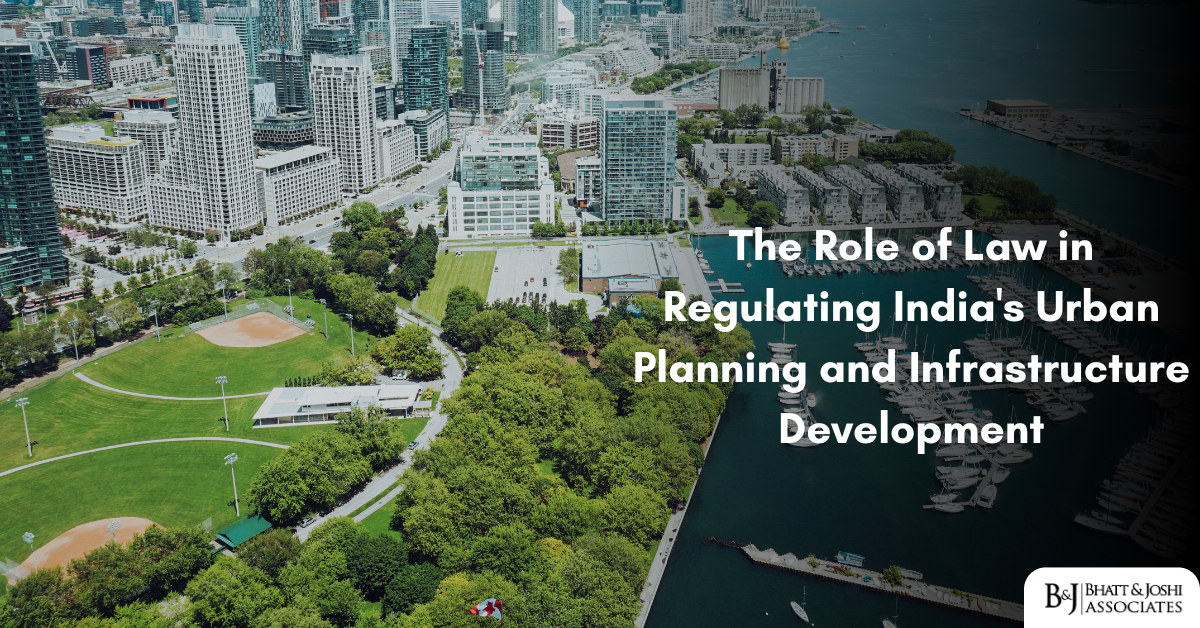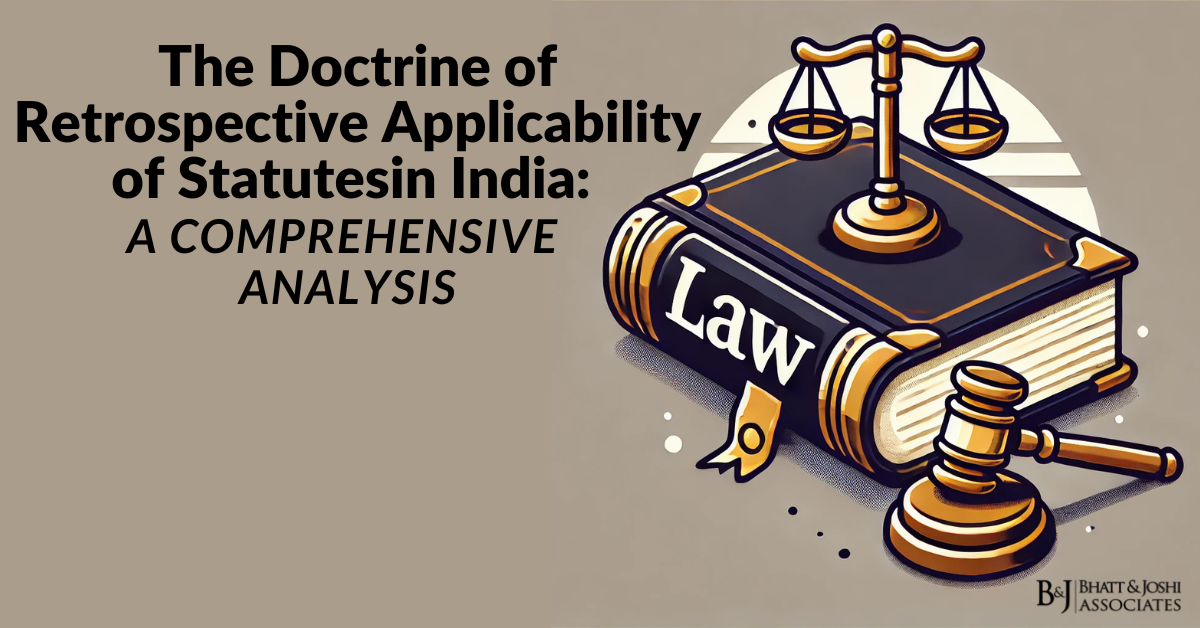Introduction
Urban planning and infrastructure development form the backbone of any country’s socio-economic growth. In India, a rapidly urbanizing nation, these aspects are critical not only for improving the quality of life but also for sustaining the economy. The legal framework governing urban planning and infrastructure development plays a pivotal role in ensuring systematic growth, equitable resource allocation, and environmental sustainability. This article delves into how the law regulates these sectors in India, exploring the key legislations, regulatory bodies, judicial interventions, and landmark judgments that have shaped the trajectory of urban development.
Historical Context of Urban Planning Laws in India
India’s journey with urban planning laws dates back to the colonial era when the British introduced rudimentary town planning measures to cater to administrative and commercial needs. The Bombay Town Planning Act of 1915 was one of the earliest statutes that laid the groundwork for organized urban planning. While this law reflected the colonial priorities of facilitating trade and governance, it also sowed the seeds for future urban development frameworks in India. The pre-independence period witnessed limited planning efforts focused on select urban centers, largely ignoring the needs of the indigenous population and rural-urban linkages.
Post-independence, urban planning gained prominence as a critical area for nation-building. The Constitution of India, through its Seventh Schedule, allocated “urban planning” and “land improvement” as State subjects, granting states the primary responsibility for urban development. The emergence of five-year plans further emphasized the importance of urbanization in economic growth, leading to the establishment of regional planning initiatives and housing policies. The introduction of the Town and Country Planning Acts by various states marked a significant step toward codifying urban planning practices. These acts provided the framework for preparing development plans, zoning regulations, and controlling land use, laying the foundation for sustainable and organized urban growth.
Evolution of Legal Framework for Urban Development
The evolution of India’s legal framework for urban planning and infrastructure development can be traced through key legislations and constitutional amendments. The most transformative of these was the 74th Constitutional Amendment Act, 1992, which decentralized urban governance by empowering Urban Local Bodies (ULBs). This amendment mandated the formation of municipalities and corporations, giving them the authority to prepare plans for economic development and social justice. By introducing the Twelfth Schedule, which enumerates urban planning as a key function of ULBs, the amendment aimed to ensure participatory governance and accountability in urban management.
States enacted their own Town and Country Planning Acts, such as the Maharashtra Regional and Town Planning Act, 1966, and the Karnataka Town and Country Planning Act, 1961, to regulate urban development within their jurisdictions. These acts empower authorities to prepare master plans, regulate land use, and control development activities, ensuring that urban growth aligns with environmental and socio-economic priorities. The liberalization of the Indian economy in the 1990s further underscored the need for robust infrastructure laws to accommodate rapid industrialization and urbanization. As a result, comprehensive policies and laws addressing housing, transportation, and environmental sustainability were introduced.
Constitutional Provisions and Urban Governance
The 74th Constitutional Amendment Act revolutionized urban governance by decentralizing decision-making and empowering local governments. Under this framework, municipalities were entrusted with preparing development plans, implementing welfare schemes, and managing urban services. This shift aimed to bridge the gap between policy formulation and ground-level execution, fostering greater responsiveness to citizens’ needs. Additionally, the Seventh Schedule of the Constitution delineates the responsibilities of the central and state governments, placing “urban planning” under the State List while allowing the central government to intervene in matters of national importance through concurrent powers.
Despite these provisions, the implementation of urban planning laws often faces challenges due to fragmented governance and overlapping responsibilities among multiple agencies. The lack of coordination between central, state, and local authorities frequently hampers the efficient execution of development projects. To address these issues, there is a growing emphasis on integrated planning mechanisms and collaborative governance models.
Land Acquisition and Infrastructure Development
Land acquisition is a critical aspect of urban planning and infrastructure development, often leading to conflicts between developmental needs and the rights of landowners. The Right to Fair Compensation and Transparency in Land Acquisition, Rehabilitation and Resettlement Act, 2013, replaced the archaic Land Acquisition Act of 1894, ensuring fair compensation and rehabilitation for affected individuals. This legislation introduced a participatory approach to land acquisition, mandating social impact assessments and consultations with affected communities.
The new law also incorporates provisions for the rehabilitation and resettlement of displaced persons, addressing long-standing grievances associated with large-scale infrastructure projects. However, the implementation of these provisions remains inconsistent, with several cases highlighting delays and disputes over compensation. Balancing the need for land acquisition with social equity and environmental sustainability continues to be a pressing challenge in India’s urban development landscape.
Environmental Considerations in Urban Planning
Environmental sustainability is a cornerstone of urban planning in India, as rapid urbanization often leads to ecological degradation and resource depletion. The Environmental Protection Act, 1986, along with the Air Act, 1981, and Water Act, 1974, provides a comprehensive legal framework for regulating urban infrastructure projects. These laws aim to mitigate environmental impacts through measures such as pollution control, resource conservation, and adherence to environmental clearances.
Specific regulations, such as the Coastal Regulation Zone (CRZ) Notifications under the Environmental Protection Act, govern construction activities in coastal areas to protect fragile ecosystems. Urban development projects must also comply with the Environmental Impact Assessment (EIA) process, which evaluates potential environmental risks and recommends mitigation strategies. Despite these safeguards, non-compliance with environmental regulations and weak enforcement mechanisms remain significant challenges, necessitating stronger legal and institutional frameworks.
Real Estate Regulation and Transparency
The Real Estate (Regulation and Development) Act, 2016 (RERA), marked a turning point in regulating India’s real estate sector. This legislation aimed to enhance transparency, accountability, and efficiency in real estate transactions, protecting buyers’ interests and promoting timely completion of projects. RERA mandates the registration of real estate projects and agents, ensures the use of escrow accounts for project funds, and provides a grievance redressal mechanism for consumers.
By addressing issues such as delayed project delivery, fraudulent practices, and lack of transparency, RERA has significantly improved consumer confidence in the real estate sector. However, its implementation varies across states, with some regions witnessing slow progress in establishing regulatory authorities and adjudicating disputes. Strengthening the enforcement of RERA provisions and ensuring uniform compliance across states is essential for fostering trust and stability in the real estate market.
Landmark Judgments Shaping Urban Planning and Infrastructure
Indian courts have played a pivotal role in shaping urban planning and infrastructure development by balancing developmental needs with constitutional mandates and environmental concerns. Several landmark judgments illustrate this dynamic role:
In Olga Tellis v. Bombay Municipal Corporation (1985), the Supreme Court held that the right to livelihood is a fundamental right under Article 21, compelling authorities to consider the rehabilitation of slum dwellers in urban planning projects. This judgment highlighted the need for inclusive urban policies that prioritize the welfare of marginalized communities.
The MC Mehta v. Union of India (1988) case underscored the importance of environmental considerations in urban planning, leading to the relocation of polluting industries from Delhi. This judgment established the principle of sustainable development, emphasizing the need to balance economic growth with environmental protection.
In Godrej and Boyce Manufacturing Co. Ltd. v. State of Maharashtra (2021), the Bombay High Court emphasized the importance of environmental clearances and adherence to environmental laws for large-scale infrastructure projects. This ruling reinforced the legal obligation of developers to comply with environmental regulations, ensuring sustainable urban growth.
In Subhash Kumar v. State of Bihar (1991), the court ruled that clean water and air are part of the right to life under Article 21, reinforcing the need for sustainable urban development. This judgment highlighted the constitutional imperative to prioritize environmental sustainability in urban planning policies.
Challenges and Opportunities in Urban Planning and Infrastructure
Despite a comprehensive legal framework, India’s urban planning and infrastructure sectors face numerous challenges. Fragmented governance and overlapping responsibilities among multiple agencies often lead to inefficiencies and delays. Poor enforcement of zoning regulations and building codes undermines planned urban growth, resulting in unregulated construction and haphazard development.
Slum proliferation and the growth of informal settlements pose significant challenges to urban planning, highlighting the need for affordable housing policies and inclusive development strategies. Environmental degradation and resource scarcity further complicate urban management, necessitating innovative solutions and robust legal mechanisms.
Technological advancements such as Geographic Information Systems (GIS), artificial intelligence, and big data analytics offer significant opportunities to transform urban planning. By leveraging these technologies, authorities can improve decision-making, enhance resource allocation, and streamline regulatory compliance. Legal frameworks need to adapt to these innovations, ensuring data privacy and ethical use while promoting technology-driven urban management.
Conclusion and Way Forward
The role of law in regulating India’s urban planning and infrastructure development is both comprehensive and evolving. While significant strides have been made through constitutional amendments, state-specific laws, and judicial activism, challenges persist in implementation and governance. Moving forward, a more integrated approach involving public participation, technological integration, and inter-agency coordination is essential.
Strengthening the legal framework to address emerging challenges, fostering a culture of compliance, and promoting sustainable development practices will pave the way for inclusive and resilient urban growth in India. As the nation continues to urbanize at an unprecedented pace, the legal and regulatory systems must evolve to meet the demands of a dynamic and complex urban landscape.














